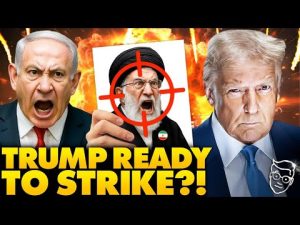In recent times, the streets of Los Angeles and New York City have witnessed a troubling series of protests turned riots, centered around the contentious issue of illegal immigration and the enforcement actions taken by the Immigration and Customs Enforcement (ICE). Independent journalist Nick Shirley has been on the front lines, bravely reporting on these chaotic events, where tensions have soared to alarming heights. With bricks flying and water bottles being hurled at police officers, these protests have been anything but peaceful, raising questions about the state of public safety and the response from the authorities.
Shirley has ventured into these tumultuous situations not just to capture the action, but to engage with those on the ground. His experiences reveal a disturbing atmosphere, where dissent turns to disorder, and individuals are seemingly more eager to clash with law enforcement than to convey any clear message about their grievances. This has led to moments of intense confrontation, where the journalist found himself in precarious positions, surrounded by protesters who were less than welcoming to his presence and questioning.
While the mainstream media often paints these demonstrations in a more favorable light, Shirley’s footage offers a stark contrast, illustrating a chaotic environment characterized by hostility and aggression. Instead of peaceful expressions of dissent, viewers see rioters attempting to incite violence, throwing not only words but objects at police vehicles. This begs the question: when do protests cross the line into riots, and what does that mean for the communities caught in the crossfire?
In one startling exchange captured during these events, Shirley found himself facing a protester demanding his removal from the scene, which only escalated tensions further. Eyewitnesses, including law enforcement, were quick to intervene, emphasizing the thin line between protest rights and public safety. The officer’s warning to the crowd about possible arrests showcased the growing concerns over maintaining order as anger boiled over in the streets.
Through it all, Shirley maintained an unexpected level of composure, recognizing that any reaction could provoke further unrest. His calm demeanor allowed him to navigate through a unique and often unpredictable landscape of activism gone awry. It became clear that many involved in the protests were not fully aware of their own motivations or the implications of their actions, adding another layer of complexity to these increasingly volatile events.
As communities reel from the impact of these riots, many are left wondering what this means for the current state of public discourse around illegal immigration. While concerns about safety and legality are paramount, there’s also a deeper conversation to be had about how these protests reflect the values and priorities of citizens today. In examining these events, it’s essential to recognize that while dissent is a crucial aspect of democracy, it must never come at the expense of public safety or civil order. Armed with firsthand accounts and raw footage, journalists like Nick Shirley remind everyone that the story is not always what it appears to be, and sometimes, behind the shouts and signs lies a troubling reality that demands our attention.







